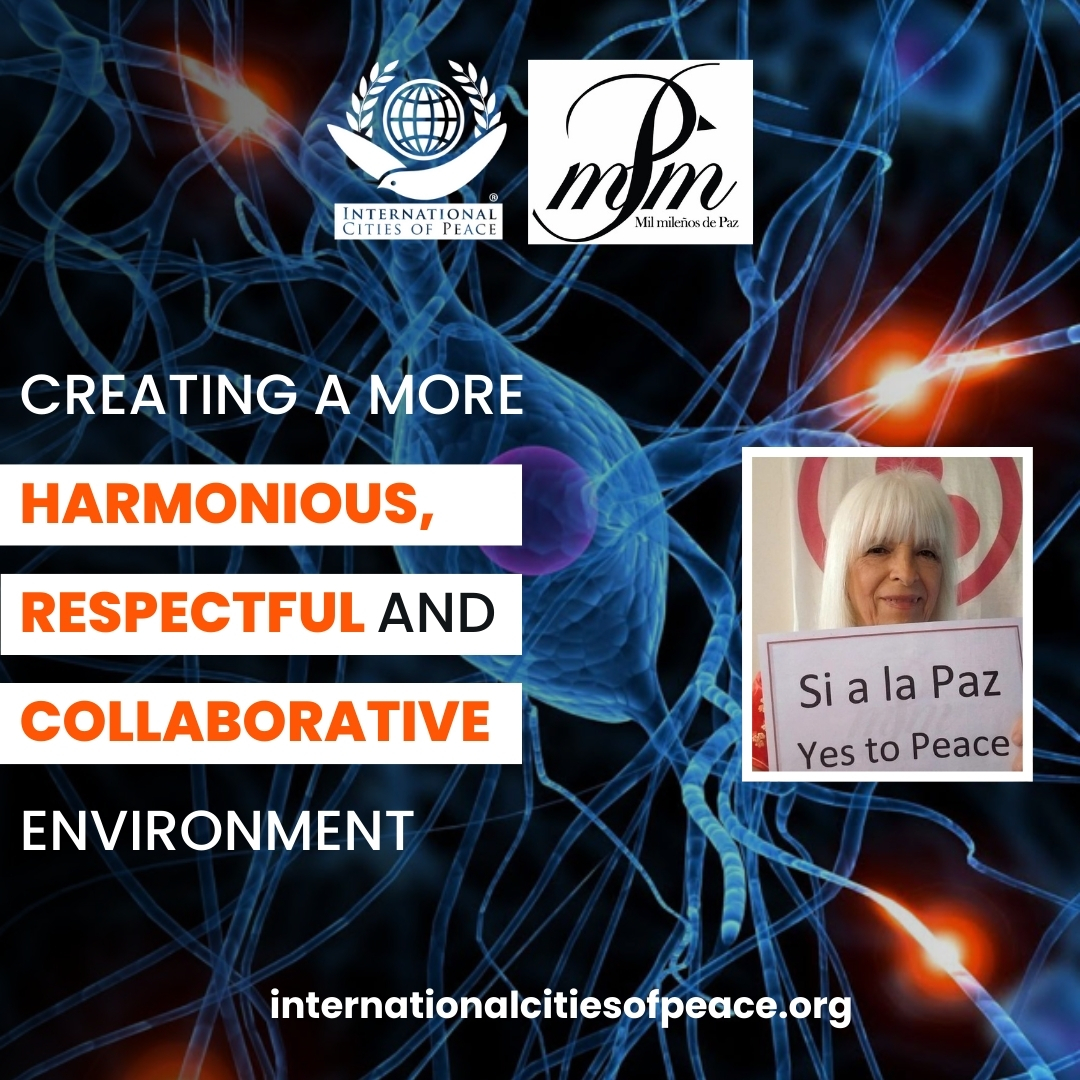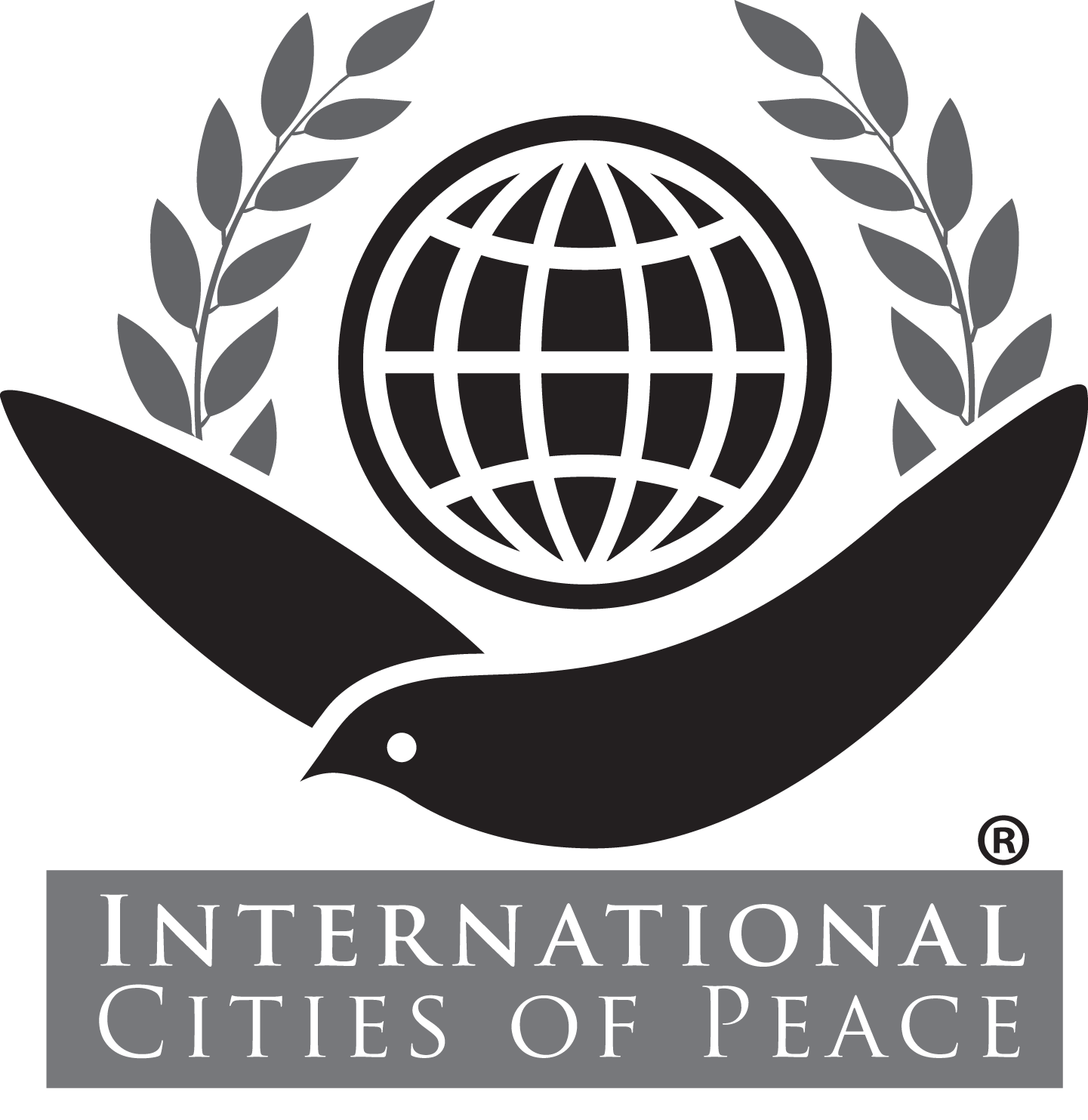Empathy and a Culture of Peace
The Culture of Peace and Neuroscience
Contributions, Coincidences and Similarities
By Inés Palomeque
Founder, Mil Milenios de Paz
Board Member, International Cities of Peace
Although the Culture of Peace and neuroscience belong to different fields, they share similarities and coincidences that can enrich the understanding of both disciplines, practice and theory in both fields, promoting a more holistic approach to peaceful coexistence.
Both areas seek human well-being, the culture of peace focuses on the promotion of harmonious relationships and the peaceful resolution of conflicts. For its part, neuroscience is a branch of medicine that focuses on the scientific study of the nervous system that includes the brain, spinal cord and peripheral nerves. Its objective is to understand how these structures function and how they relate to our cognitive, emotional and behavioral functions, that is, to understand: How do we function? Why do we function like this? And what can we do to learn to control our thoughts and emotions and improve our lives?
Empathy is very important for both. Neuroscience research shows how empathy is based on specific brain mechanisms while the culture of peace fosters empathy and mutual understanding as fundamental tools to resolve differences and build more supportive communities.
Value of education and development for both disciplines. Neuroscience provides knowledge about how human capacities are learned and developed, allowing for improved learning and teaching methods.
Value of cooperation. Neuroscience analyzes how social interactions affect the brain and behavior. The culture of peace also emphasizes positive, constructive and harmonious interactions, seeking to create a social environment that minimizes violence and fosters respect.
Value of collaboration. Collaboration between neuroscientists and experts in the culture of peace can generate interdisciplinary studies that address how social and cultural environments affect brain function, allowing for a better understanding of how to build more peaceful societies.
Promotion of the culture of peace. Neuroscience helps us understand the mechanisms that can lead to violence, while the culture of peace works to prevent and reduce conflicts through the promotion and practice of values such as respect, tolerance, human dignity and social justice.
Value of research- and evidence-based approaches. Both areas benefit from evidence-based approaches. Neuroscience uses scientific methods to investigate human behavior, and the culture of peace can use these findings to design more effective interventions.
How can neuroscience collaborate with the culture of peace?
Neuroscience can collaborate with the culture of peace in several ways, providing knowledge and tools that enrich the understanding and promotion of peaceful relationships, which help us understand how emotions affect our behavior. This understanding can be used in peace education programs that teach people to recognize and manage their own emotions, which is essential for the peaceful resolution of conflicts. By identifying the neural processes involved in empathy, cooperation, and communication, neuroscience can inform and help develop educational plans and programs that strengthen these skills in community and school settings.
Neuroscientific findings can provide insight into how the brain processes diversity and inclusion. It can help design programs that reduce prejudice and foster greater understanding and acceptance among different groups. It can also guide the design of specific meditation or mindfulness interventions, which have been shown to have positive effects on emotional regulation and stress reduction.
Collaboration between neuroscientists and peace culture experts can generate interdisciplinary studies that address how social and cultural environments affect brain functioning, allowing for a better understanding of how to build more peaceful societies.
Peace Education is a fundamental approach to foster a culture of peace from the earliest stages of life, so that children learn to resolve conflicts, to dialogue, to put themselves in the shoes of others, to work as a team, to respect and value unity in diversity.
What role does the spiritual area play in peace education?
The spiritual area can and should be included in the educational system because it is fundamental for the integral development of the human being, and the search for internal and external peace, understanding spirituality as the deep aspect of the human being that seeks meaning and significance in his life and connection with others and with the environment. It helps to overcome prejudices and cultivate an attitude of solidarity and cooperation, allowing us to address life’s challenges calmly and peacefully, without falling into verbal or physical violence.
Why incorporate peace education in the educational system?
By incorporating peace education in the classroom, on the one hand, we can develop skills that improve coexistence in the school, family and environmental environment, and on the other hand, capacities that help us recognize that our individual or collective actions have consequences and impact on our lives, on the lives of others and on the environment.
Peace education allows us to resolve conflicts through dialogue, to learn to put ourselves in the place of others, to work as a team, to respect and value unity in diversity.
It improves the school climate while preparing students to be responsible citizens committed to the collective well-being.
Conflict Resolution
From an early age, children can learn to identify and manage conflicts constructively. Teaching them techniques such as mediation to resolve disagreements helps avoid violence and promotes cooperation. These types of skills are essential both inside and outside the classroom, contributing to and generating a more harmonious society.
Peaceful Communication
It is essential in peace education to learn to create quality personal relationships through the development of communication skills that include listening with the heart, observing without judging, respecting other opinions, and identifying and expressing ideas, feelings, and emotions clearly and respectfully.
Empathy
Empathy is the ability to put oneself in another’s shoes and understand their feelings. It is essential to improve interpersonal relationships, fosters cooperation, promotes emotional well-being, inclusion, and tolerance, develops social skills, and creates a more harmonious, respectful, and collaborative environment.
Teamwork
Teamwork fosters cooperation and respect for the abilities and contributions of each person. Teaching children to work together to achieve common goals improves social skills and teaches them to value diversity and differences.
Values of Peace and Justice
Peace education promotes principles and values such as honesty, justice and respect for the rights of all people. Recognizing a close relationship between rights and responsibilities that ensure harmonious, respectful and fair coexistence.
Global Culture of Peace
In an increasingly globalized world, it is essential to teach children about cultural diversity, international cooperation and the importance of peace at a global level. Promoting global awareness and a supportive attitude contributes to the construction of a global citizenship that seeks to solve common problems peacefully.
Socio-emotional Education
Socio-emotional skills are key to personal and collective well-being. Including programs that teach children to manage their emotions, understand others, and act ethically forms the basis for a more peaceful, safe, and respectful coexistence.
Conclusions
What does Neuroscience contribute to the culture of Peace? Neuroscience offers tools to cultivate more peaceful minds and hearts, which can contribute to global well-being.
Why include spirituality in educational processes? Including spirituality in classrooms allows the formation of individuals who are more conscious, empathetic, committed, and respectful of the well-being of all people and the planet.
What is the contribution of education for Peace? Incorporating principles of education for peace in educational systems from an early age is a crucial step to live harmoniously in their immediate environment, and also so that when they are adults, they can contribute significantly to the construction of a peaceful, fair, and respectful society.





